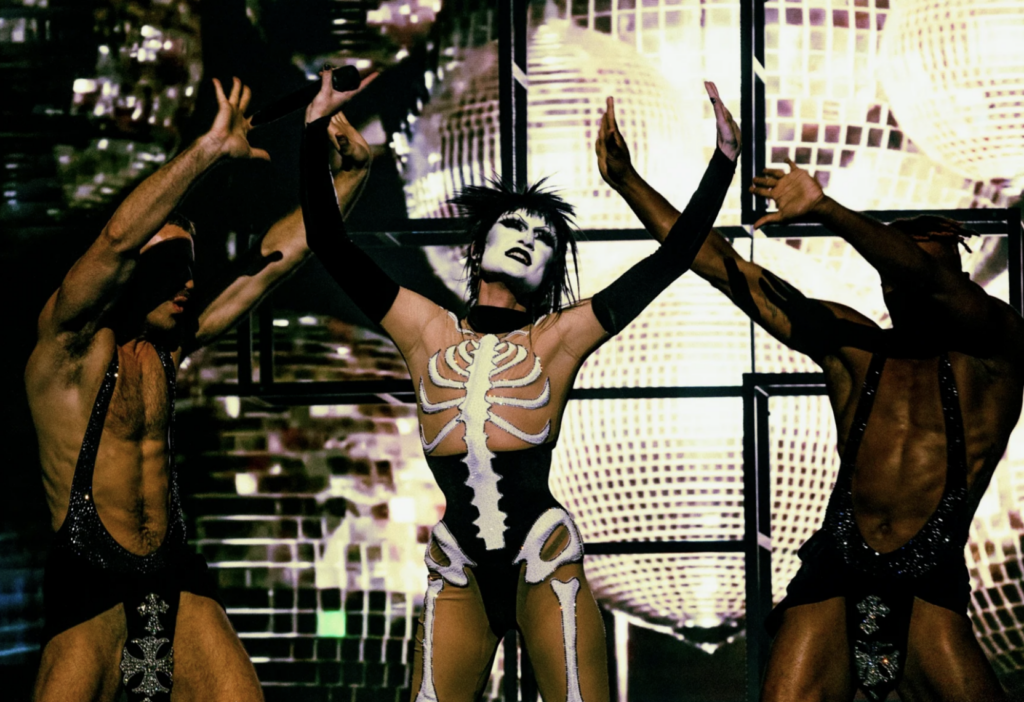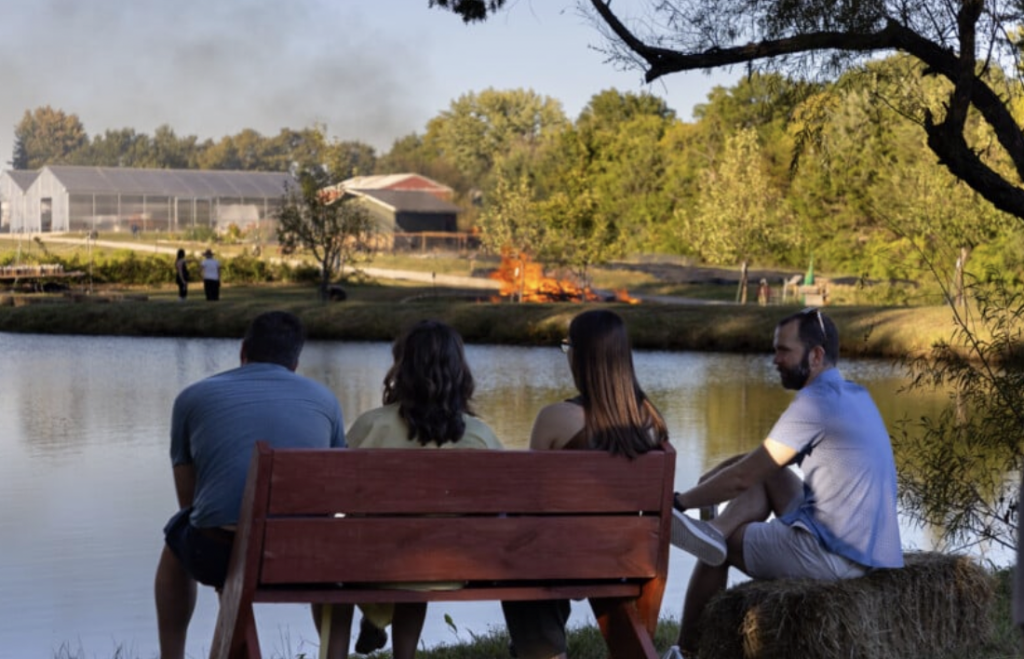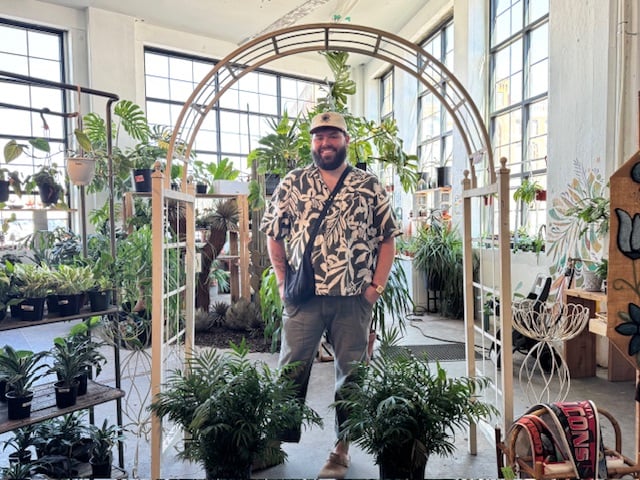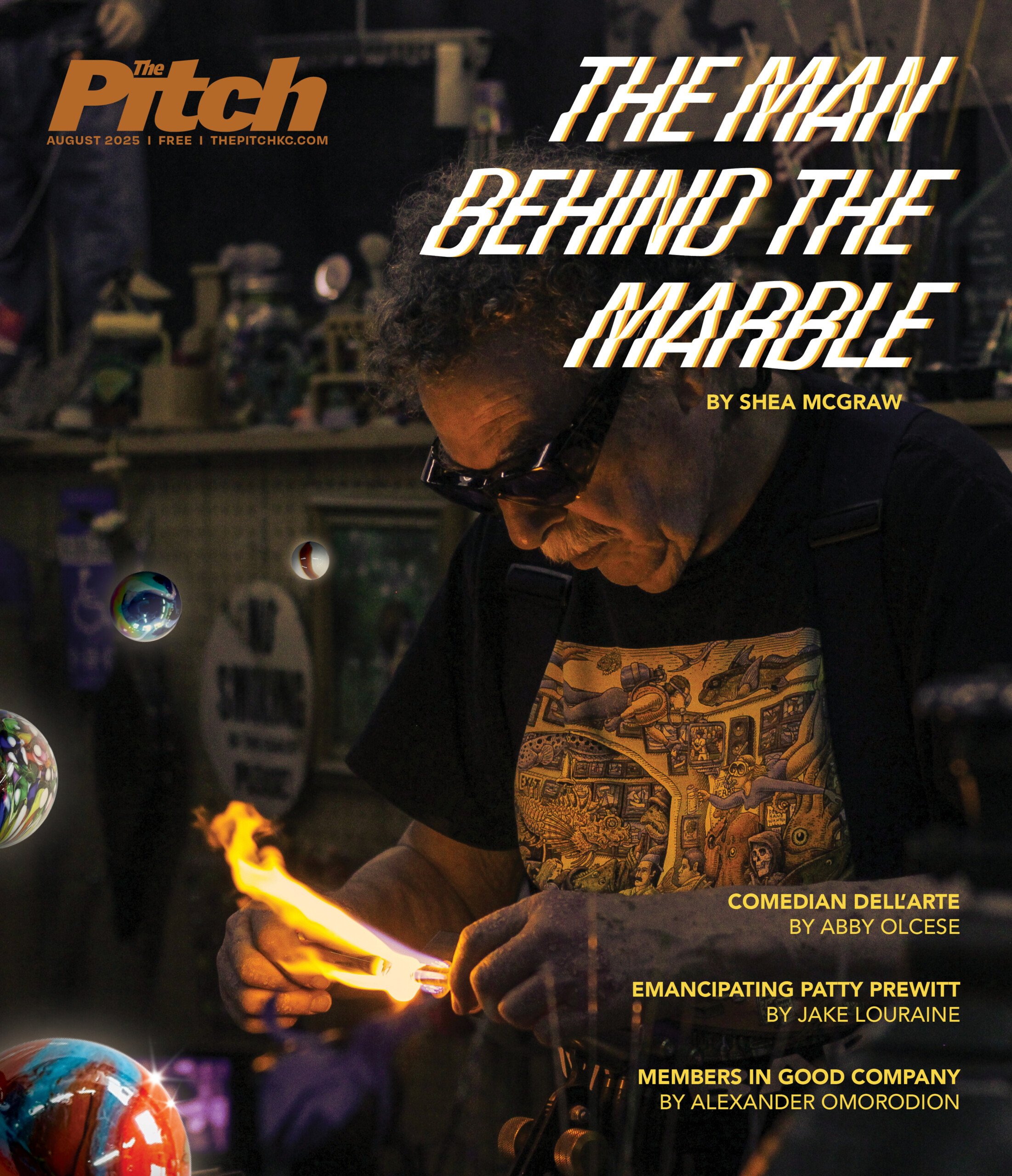The Bloodsucker of Valentine

On a clear, cold day, two men stand on the sidewalk in front of 3715 Broadway, smoking mini cigars. One of the men, Carlos, wears a one-piece, navy-blue mechanic’s jumpsuit; the other wears a sweatshirt and worn-looking pants. They’re outside ZLB Plasma Services, a one-story white building with heavy white drapes pulled across each window. They look as though they’re loitering, the way many young men do on this block. But they’re actually ZLB employees on their smoke break.
“I love my freezer,” Carlos says cheerfully. “Negative 45 degrees.” Carlos’ freezer is where donated plasma is stored. The plasma is the portion of blood that contains proteins and disease-fighting antibodies. It will be sent to one of three processing centers — in Illinois, Switzerland or Germany — where it will be made into pharmaceutical products. ZLB allows donors to give twice a week. Donors are paid about $25 to $40.
ZLB’s spokespeople like to say that their donors come from all walks of life, which is true. But neighbors say the plasma center encourages drug addicts to trade blood for drugs. Dealers sometimes stand near the center waiting for addicts to walk out with their newfound cash. Some say dealers will front drugs to addicts waiting at the center — at twice the usual street price — knowing that they will have money in their pockets once they donate.
In the historic urban neighborhood surrounding ZLB, a lot of restoration has been going on lately. Old drug houses and by-the-hour hotels have been boarded up or torn down. Just west of Broadway, the Valentine area, with its stately old houses, would be among midtown’s nicest neighborhoods if it weren’t for the addicts that frequent ZLB.
Those addicts complicate Carlos’ smoke breaks.
“I was out here one day, and a guy snatched my bag,” Carlos says. “I beat his ass. We rolled right out there to the middle of Broadway.” He points at the place with the lit end of his smoke.
Just then, four guys in baggy jeans and puffy coats approach the plasma center. They post up comfortably by the door.
The ZLB worker next to Carlos advises them, “You better move on. Security guard is right in that van.” A white van blocks the entrance to the ZLB parking lot while a large truck is being loaded with biohazardous waste.
The men shuffle down to the end of the building. “We don’t have a uniform on,” Carlos says. “They don’t know.”
Just past the building, the men stop again, still aimless but off ZLB’s property. Matt Martin sat on his porch drinking from a large green bottle of Perrier on a recent chilly afternoon. Martin lives on Washington, the street just west of Broadway on the 3700 block. Like many of the houses on his block, Martin’s is a two-story shirtwaist with a limestone façade and a wide, sturdy porch. And like many residents in the Valentine and Broadway-Gillham neighborhoods, Martin says the plasma center depresses the area.
“It draws drug addicts, drug dealers, the unemployed, vagrants,” he says. “Why not open a place like that closer to the hospitals in the community? It would make more sense to me to have a place like this closer to Truman or Kansas University. They could treat these people and offer more services. This is just ripping them off here and taking their body parts, is what it is.”
Chris Jordan, co-president of the Valentine Neighborhood Association and a board member of the Broadway/Westport Council, says her two neighborhood groups banded together to start a security fund last year. They hired Westport Security guards to patrol Broadway on bikes for three months last summer, at a cost of $27,000. During those three months, residents said they felt safer on the streets.
[page]
Jordan says she spoke with Jason Herbster, who manages ZLB’s location on Broadway. She asked him if the company would like to join the neighborhood groups and contribute to the security fund. She says Herbster said he’d check with ZLB American headquarters, located in Boca Raton, Florida. She says Herbster never got back to her.
“They were not willing, I guess, to participate,” Jordan says.
Neighbors say ZLB has upped the area’s crime, but police records show that most arrests on this block are made for auto thefts, shoplifting from the Family Dollar across from ZLB and miscellaneous assaults. Records show that cops sometimes go to ZLB to conduct interviews related to other crimes or to document the activities of a felon, but few crimes are connected to the address.
ZLB Plasma is owned by CSL Limited, a biopharmaceutical company with headquarters in Melbourne, Australia. There are more than 60 ZLB collection centers in the United States and eight in Germany. CSL collects an estimated 3 million liters of plasma annually — enough plasma to fill about 12 backyard swimming pools. The plasma is used in the manufacturing of products such as Helixate, which treats a disease that inhibits blood clotting, and TachoComb, which aids in wound healing. None of ZLB’s plasma is used for transfusions.
Nadine Johnson, the compliance branch director for the Kansas City District of the Food and Drug Administration, says her office audits ZLB’s list of donors and makes on-site inspections every two years. The FDA looks at factors such as donor history forms and the results of donors’ medical exams. She says plasma-center employees who screen donors are told to do a “visual check” for puncture marks in the arms of donors to check for intravenous drug use, but there’s no way to tell if donors have been using other drugs. “Vein puncture sites are usually in one place, and plasma donation centers always draw from the elbow area,” she says. Donors are often quizzed about their drug history, but, Johnson says, “there’s no psychic crystal ball to tell if people are lying.”
Herbster, the local ZLB manager, declined to speak with the Pitch and referred questions to Sonya Williams, ZLB’s spokeswoman in Knoxville, Tennessee. Williams says ZLB conducts medical screenings that look for needle marks. Williams acknowledges that there’s no test to determine if a donor is a drug user. Donors, Williams insists, come from “all walks of life.”
It’s the cracked-out walk of life that ZLB’s neighbors are the most familiar with. At the News Room, a dive bar across the street and a bit south of ZLB, regulars are happy to tell of their front-window surveillance of the activities outside ZLB. Jason Walgrom, a News Room bartender who goes by the name Diggity, peers out the bar’s front window at the ZLB building. “It’s like New Jack City out here,” he says.
Bartender Bobby Arias says drug dealers used to hide crack under items at the Family Dollar store. When a customer paid, they’d learn the crack’s location — under the Pampers, for example.
With a wheezy laugh, a grizzled, bearded patron recounts a scene that he saw one afternoon. “People used to sell drugs right out the front window of that apartment building,” he says, pointing across the street to 3721 Broadway. It’s a three-story building with first-floor windows at eye-level. “Guys would knock on the window and exchange money and crack right there. Once there was a sting, and the cops had a battering ram to get through the front door, and while the cops were inside, some guy still came up and knocked on the window.”
[page]
When neighborhood mailman Kevin Johnson swings by, he adds that he once saw city workers fill the hollow yellow parking poles outside ZLB’s parking lot with concrete. He says crack dealers used to stash drugs in them.
Diggity says he’s surprised that more ZLB donors don’t bring their newly earned cash to the bar for a drink. “Sometimes they spend their money on beer,” he says. “But I think they like the rock.”
Jan Johnson is a former Kansas City resident who moved to the East Coast 38 years ago with her husband. For 21 years, she ran a weekly newspaper, called City News, in Newark, New Jersey. In 2004, she and her husband bought a condo in downtown Kansas City with plans to retire here. In October 2005, she and two other investors bought the Chatham Hotel, at 3701 Broadway, next door to ZLB. She says she plans to renovate the old hotel into condos.
But for now, the six-story Chatham Hotel serves as a den for vagrants. Its windows are low enough to hop through when the boards that cover them are pried away. The insides of the windows are spray-painted with graffiti all the way up to the top floor. The Chatham was built in 1923 and served as an upscale hotel until 1967, when it was turned into a dormitory for women learning to be flight attendants at the Weaver Airline Personnel School. When the school closed, the Chatham became an abandoned eyesore.
Johnson has hardly been an ideal property owner, spending most of her time in New Jersey. Rehab work on the building has been sporadic. Johnson blames the plasma center for attracting the vagrants who break into the Chatham. “We’ve boarded up our building at least 10 times, about seven times in the last two to three months,” Johnson says by phone from her home in Plainfield, New Jersey. “Apparently, unless you are there to physically confront trespassers, the police can’t do it on their own. Those people [trespassers] go straight to the plasma center, then they get high and they go to our building looking for a place to sleep overnight. It’s a mess.”
ZLB’s landlord, Gilbert Kahn of Prairie Village, says he doesn’t know much about the operations at ZLB. “I had a real estate company put them in,” he says. “I really don’t know too much about them, OK?”
When told that his tenant is blamed for attracting a criminal element to the neighborhood, Kahn laughs, “Is that right? Well, you have to talk to them, not me. I’m not committing the crime. Look, honey, there’s nothing I can do about it.”
Johnson says she contacted Kahn in the spring of 2005 and offered to buy the property, but his asking price — she says it was about $900,000 — was too high.
Johnson’s husband, Henry, called ZLB’s corporate office in Florida to complain about the problems it causes the neighborhood. A ZLB representative admitted to him that ZLB strategically places donation centers in economically disadvantaged areas, “where there are dollar stores and check cashing places and that kind of thing,” Jan Johnson says. “To me, the plasma center is where everything that blights the neighborhood comes from.”
[page]
Johnson and her husband are in the process of relocating to Kansas City. Meanwhile, it’s the city that has had to take responsibility for cleaning up the Chatham.
Shockey Franciscus is the city’s dangerous-buildings inspector. He’s a stout, friendly guy with green eyes and a big smile. “We go in with the PD,” he explains while shivering outside the Chatham on a cold afternoon. Behind him, patrons can be seen going in and out of ZLB’s entrance, next door to the abandoned hotel. The plywood has been torn from the Chatham’s front window on the south side, and the front gate on the fence surrounding the building is wide open. Franciscus knows not to enter the building alone; he doesn’t want to surprise anyone who might have taken up temporary residence. “Don’t want to board anyone in. Someone may be passed out in there.”
Two police cars pull up. One halts in the median, the other in front of a bus stop. Officer Kevin Jurgielski steps out of the car and approaches the building. He looks up at it and shakes his head.
Another officer, Richard Winston, asks Franciscus, “Got a key?”
Franciscus shakes his head. He points to the open window.
A fire truck from Station 19 arrives. Half a dozen firefighters jump out and attach a short ladder from the ground to the open window. They warn one another to avoid broken glass.
The cops and firefighters ascend the ladder and climb inside. Their flashlights illuminate the walls, and their voices fade into the darkness. “KCPD! Anyone here?”
Just inside the open window, a giant safe lies on its side.
A firefighter calls out, “There’s an elevator shaft that’s open,” which creates a stir among the rest. “Could kill a fireman in that, in smoke,” firefighter Bob Rocha says, explaining the risk that open elevator shafts pose.
“Lighters, broken bottles,” a firefighter says, sweeping his flashlight over the area near the open window. “Looks like someone took a crap over there.”
Someone finds a newspaper from a week earlier and jokes, “At least they’re reading.”
The cops return to the first floor. “The sixth floor’s the worst,” Jurgielski reports. “There are walls knocked all over, porno magazines, hypodermic needles, makeshift beds. There are definitely squatters, likely wandering in from the plasma center next door. This is where they do their dope and prostitution.” On the third floor, he says, someone has spray-painted “This is my floor, bitches!”
The firefighters try to assess the Chatham’s structural soundness. In a room just off the main corridor, a firefighter spots a bunch of dusty, overturned chairs with red cushions. “Give ’em to Station 7. It’d be an upgrade,” he says, laughing. They make their way up a set of crumbling concrete stairs that look like they were once grandiose. They walk through a corridor and into an empty hotel room. A ghostly bluish light pours in from a painted-over window. A porcelain sink sits, disconnected, in the middle of the floor. Outside the room, more firefighters check out the opening to a dumbwaiter, where they see big wooden beams, charred black and blistered. “Big fire,” one says. “Been some good fires here, but not since it was abandoned.”
“Hell of a building,” Franciscus says. “They don’t build ’em like this anymore.” The peeling paint in one hallway juts out in sharp daggers.
On the first floor, Rocha nudges a pair of pants and an unopened can of pasta and chicken with his foot. “You’re breathing in gandy dust,” he says, using firefighter slang for vagrants.
[page]
A firefighter points his flashlight down a pitch-black set of stairs. “Wanna see something really scary? Let’s go to the basement,” he says. There’s black wire casing everywhere; intruders have stripped the copper from it.
When they return to the window that they crawled through, the lead firefighter says, “Let’s try to roll this safe over, boys.” Four firefighters get on one side and heave. It doesn’t budge. They explode into laughter.
When the firefighters exit the building, they find that the cops are already gone.
Meanwhile, Bill Britz has arrived with his truck, ready to replace the missing boards on the windows of the Chatham. He has a contract with the city to board up abandoned buildings. Britz attempts to crack jokes with Franciscus about this block’s reputation before getting down to business. He nods in the direction of ZLB. “I’m gonna sell some blood and buy some crack. You know, to try and fit in with the neighborhood,” Britz says.
“Do me a favor,” Franciscus says. “Do this board-up first.”
The waiting room of the ZLB Plasma Services center on Broadway is almost never empty. On this Thursday, maybe 50 molded plastic seats are occupied by people in heavy winter coats, though it’s unseasonably warm outside. The room is covered in cheerful posters of smiling people and quotes about “Why I Donate,” offering reasons such as helping relatives who have blood diseases. The people in the posters look happy and healthy. The people in the waiting room do not.
A woman complains loudly on her cell phone about a sick housemate. Two more women commiserate about the difficulty of losing “baby weight.” A cluster of men stand around the men’s bathrooms, and a handful of others pace the room. Women in white coats call names from a sign-in sheet behind a white counter. To donate, people must show ID and provide proof of address (because donors must live within 125 miles of a donation center) and proof of a Social Security number.
An ATM sits just inside the door. After they’ve given their plasma, donors enter a code into the machine and receive their cash. In 2002, when the plasma center was located in the Valentine Shopping Center, a burglar threw a rock through a window of a vacant store and knocked a hole through the gypsum wallboard to enter ZLB. The burglar went for the ATM but couldn’t pry it open.
“You’re getting loud again,” one of the lab-coated workers calls out, as if quieting a high school lunchroom.
“Shut up,” someone in the crowd responds.
“All right, I will shut up,” the employee snaps back. “And won’t nobody get called.”
Behind her, in an adjoining room, employees buzz around in lab coats. Donors sit behind short, cubiclelike partitions, their arms extended.
The plasma-collection process is called plasmapheresis. Blood is drawn through a needle and sucked into a machine that uses a centrifuge to separate blood cells from plasma. The blood cells, minus plasma, are then returned to the donor through the same needle.
A skinny woman bounces her feet nervously against the floor in the waiting room, her ashy legs showing through holes in her ripped jeans. She stares straight ahead.
The employees behind the counter call out a few names. Meanwhile, a young guy in a red jersey walks through the front door and looks out over the waiting room. “Natalie?” he calls.
[page]
The skinny woman jerks up out of her seat and walks toward him. The two glance at each other warily. She follows him outside.
Natalie returns five minutes later, sits down again in her chair and resumes tapping her feet.
A man walks in wearing a long coat, a hat and three-day salt-and-pepper stubble. He grins to himself, muttering, and pounds one fist on the counter before taking a seat.
Outside a door marked “Screening Room,” a guy wearing a blue do-rag waits for his first chance to donate. “Did it hurt?” he asks everyone who leaves the rooms. He says everybody knows about this place. “Who don’t know?” he asks. “Everyone in here knows this is where you go if you lost a job, if you’re down on your luck.” He pauses. “Everyone in here got a habit.”
A cluster of young men stands at the edge of ZLB’s property, passing a joint back and forth. Though ZLB employs a security guard, he’s nowhere in sight.
A 26-year-old man, who gives his name as Saladin, asks for spare change. He says he can’t donate plasma because he’s too thin. (Donors must weigh at least 110 pounds.) He wears a black Adidas tracksuit over a T-shirt with a picture of a Cadillac and the phrase “WATCH FOR THE JUMPOUT.” A silver crown caps one tooth, and his hair is tucked under a cap. He’s happy to talk about the drug business that goes on outside the plasma center. He explains that when a couple walks down the sidewalk and the woman walks on the side nearest to the street, it’s a signal for prostitution. “Walking out there, that means you’re selling your body,” he explains. “See, I’m teaching the codes already. After dark, the only thing you run into is schemers.”
Saladin says he takes pity on the people sitting in the waiting room at ZLB. He can imagine what’s going through their heads. “They’re thinking, even while they’re giving blood, about the sandwich they’re gonna get. I’m gonna get me a soda and a sandwich and a pack of cigarettes. But they never get the chance because he [the dealer] is right there when they walk out the doors. That’s a dope addict’s mind. They never get to doing what they want to do.”
All one has to do to score drugs outside ZLB is to sound like an interested buyer, he says. “Just walk out and say, ‘What’s up?’ People who have been on the streets for a while can tell.”
Saladin says, “It take three days for crack to get out of your system. So they giving drug blood. Ninety-nine percent that sell plasma at that place are drug addicts. For real, the only way to fix the problem is if they offered vouchers that you could exchange for cash at the grocery store.” He considers this option. “But you’d still get the same customers. They’d take that voucher and sell that. There’s no way around it. For every criminal job, there’s a criminal mind.”
He takes out a pen and writes a sentence on a notebook. “We’re just ordinary people,” he writes, quoting a John Legend song. “We don’t know which way to go.”




